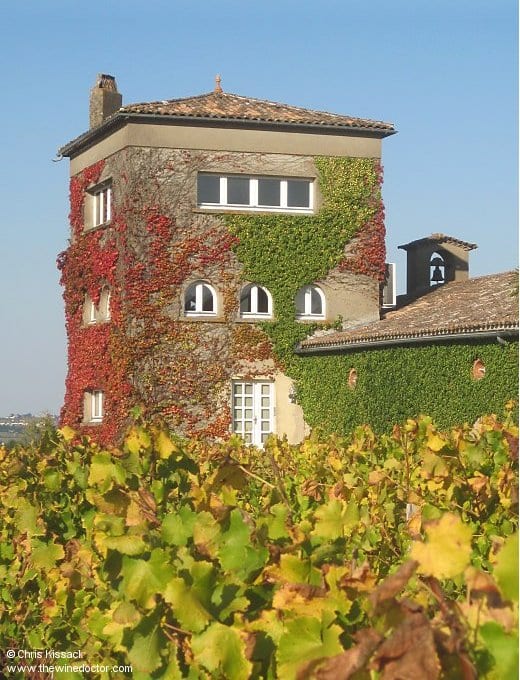Château Rieussec
Château Rieussec – or Château Rieusec if you wish to adhere to the spelling used when the property was listed in the 1855 Sauternes classification – is located not far east and a little south of Château d’Yquem. The château and chai occupy a handsome, elevated position; at 78 metres above sea level, a veritable mountain if it were in Muscadet or the Médoc, but merely the second highest point in the Sauternes appellation, the highest being that on which Château d’Yquem sits. It is located alongside the D8, which runs roughly east-west here, curving round the Rieussec vineyards as it runs towards Fargues. The vineyards are actually divided between the communes of Fargues and Sauternes, nevertheless the property is usually listed under the former as it is within Fargues that the aforementioned buildings sit. It is the only premier cru property in this commune, Château de Fargues itself being unclassified of course.
Created by Carmelites
The history of this illustrious Sauternes estate stretches back many centuries, to when the estate was in the ownership of Carmelite monks (the order in question also owned, and gave their name to, Château Les Carmes Haut-Brion in Pessac-Léognan). The origin of the name Rieussec remains uncertain, although writing in Grands Vins (University of California Press, 1995), Clive Coates asserts that the name may be a contraction of Ruisseau, after a stream which runs between Château Rieussec and Château d’Yquem, and sec, the latter part applied because the stream in question has a reputation for drying up during the summer months. It is an attractive proposition, but even if the results of this particular etymological investigation turn out not to be true, it does at least seem likely that the origins of Ruisseau and Rieussec are related.

